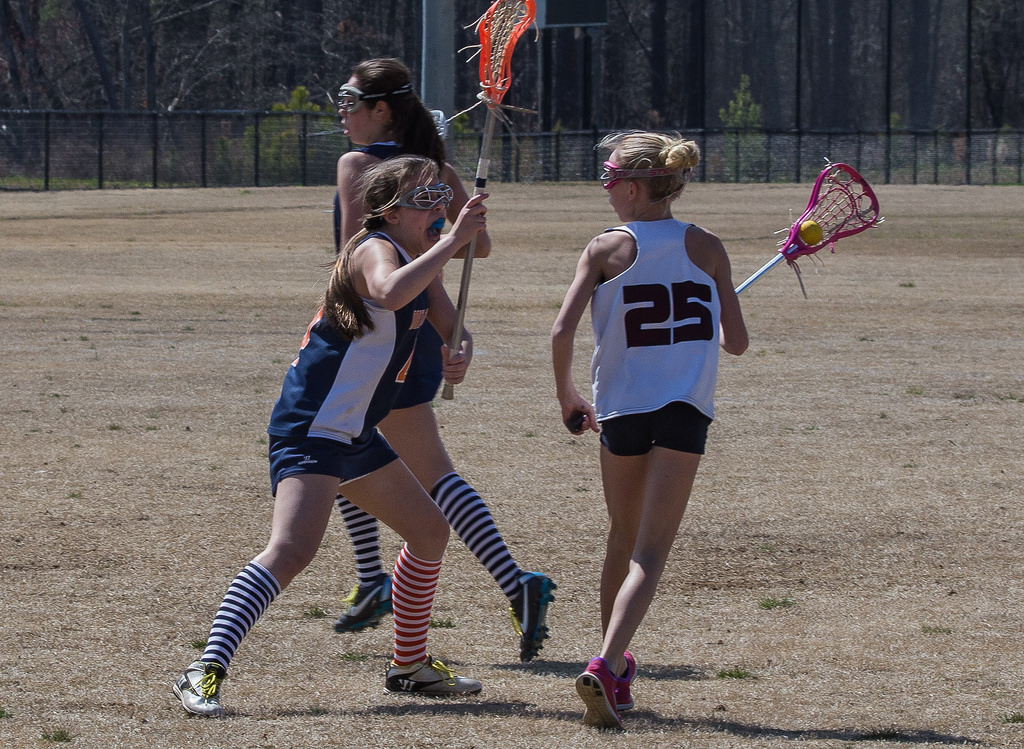by Louise Kelley, DPT
During one of my daughter’s recent lacrosse games, her teammate, attempting to deny the opposing team an open pass, quickly pivoted to the right. Her left foot and leg, however, stayed planted, and she fell to the ground. Diagnosis: Anterior cruciate ligament (or ACL) tear, the injury of one of the knee’s major ligaments.
ACL tears are all-too-common in youth sports, particularly in games requiring cutting, pivoting, and jumping, such as lacrosse, soccer, volleyball, and basketball.
What factors predispose athletes to this season-ending injury? And what can be done to prevent an ACL tear?
The Jump Test:
To assess risk, first have the athlete perform the jump test. From a standing position, the athlete squats, jumps off of both feet to a tuck positon, then lands on both feet. If the athlete exhibits any of the following four neuromuscular imbalances, they are at risk of:
Ligament dominance: If there is insufficient muscle strength to absorb the contact with the ground, the joints and ligaments will have to take up the force, leading to ligament rupture.
What does it look like? When the athlete lands, the knees fall excessively inward.
What can you do about it? Practice jumping with good technique, especially with the landing. The athlete should make sure their knees are pointing forward or slightly inward, but not excessively, when they land.
Quadriceps dominance: The person preferentially uses their quadriceps muscles to stiffen and stabilize the knee, rather than using the glutes and hamstrings.
What does it look like? The athlete lands with less bend in their knees and ankles. The landing is not soft but, instead, noisy.
What can you do about it? Perform exercises that strengthen the hip muscles (glutes) and the hamstrings. Examples include the clamshell, hamstring curls on a Swiss ball, and the Nordic hamstring exercise. Keep your calf muscles flexible.
Leg dominance: The athlete demonstrates significant differences in leg strength and control from one side to the other.
What does it look like? When the athlete jumps up, their legs won’t be symmetrically positioned. One thigh may flare or not lift as high or one foot might not kick as high. The feet may not land at the same time or next to one another.
What can you do about it? Train for symmetry. Try single leg activities, including balance work and hopping.
Trunk dominance: The athlete has difficulty controlling their trunk in all three planes of motion during the jump.
What does it look like? The athlete might rotate their trunk, either during the height of the jump or upon landing. At the peak of the jump, the thighs won’t reach parallel.
What can you do about it? Core stabilization exercises, such as side planks or lying length-wise on a foam roller and lifting a single arm or leg.
Other suggestions to prevent ACL injuries:
- Avoid “locking out” your knees when standing.
- Shift your weight from side to side to prevent one-sided dominance.
- When you get up from a chair or climb up stairs, make your gluts (the buttocks muscles) and hamstrings (muscles in the back of the thigh) do the work, instead of the quads (the muscles in the front of the thigh).
Finally, teams should invest in an ACL prevention program before the onset of the season. If an athlete exhibits any of the above neuromuscular imbalances, she/he should consider a consult with a physical therapist, who can advise on additional interventions.
References:
- Hewett TE, et al. 2010. Understanding and preventing ACL injuries: current biomechanical and epidemiologic considerations. N Amer J Sports Phys ther. Vol 5(4): 234-251.
- Powers CM. 2010. The influence of abnormal hip mechanics on knee injury: a biomechanical perspective. J Ortho Sports Phys Ther. Vol 40(2): 43-51.
- Alentorn-Geli E, et al. 2013. Prevention of ACL injuries in sports. Knee Surg Sports Traumatol Arthosc. 1-13.

